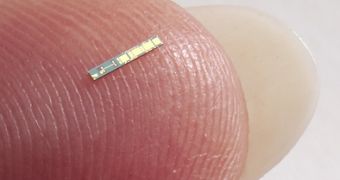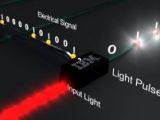IBM has developed a technology that, if proven successful, would bring the world one step closer to the most unbelievable SF predictions. If electric current was a breakthrough, how would you consider substituting it with... light? The new technology is alleged to allow different CPU cores exchange signals through light pulses, instead of using electrons. The method is supposed to be faster and more efficient and would heavily reflect in the chip's performance.
The new technology uses a silicon electro-optic modulator, called the Mach-Zehnder electro-optic modulator, that converts electrical signals into pulses of light. The IBM research team has successfully achieved a 1,000 to 1 miniature version of the device and has created complete optical routing networks to be integrated onto a single chip. Electric current suppression would eventually result in faster, cheaper and cooler chips to feature a hundred times faster communications bandwidth than the wired equivalents.
"Work is underway within IBM and in the industry to pack many more computing cores on a single chip, but today's on-chip communications technology would overheat and be far too slow to handle that increase in workload," said Dr. T.C. Chen, vice president, Science and Technology, IBM Research. "What we have done is a significant step toward building a vastly smaller and more power-efficient way to connect those cores, in a way that nobody has done before."
World's most advanced processor is not used on personal computers, as many may think, but is to be found inside Sony's Playstation 3 and features 9 cores on a single chip. At the moment, multiple core integration is handicapped by the fact that wired interconnectivity takes space and radiates heat at the same time. Eliminating the wires would allow hundreds or thousands of cores to be interconnected in a single chip. More than that, sending information between cores can be 100 times faster and 10 times more energy-efficient.
The only problem with the optoelectronic devices is making them small enough to be ready for chip integration, as they have proven tricky to manufacture over the time. The only viable solution would be mass-manufacturing using the silicon manufacturing lines capabilities for components that measure only a few millimeters on a side. There is no estimated time for the products to be actually used in multiple-core chips, but the idea itself is enough to keep things moving towards the right direction.

 14 DAY TRIAL //
14 DAY TRIAL // 
